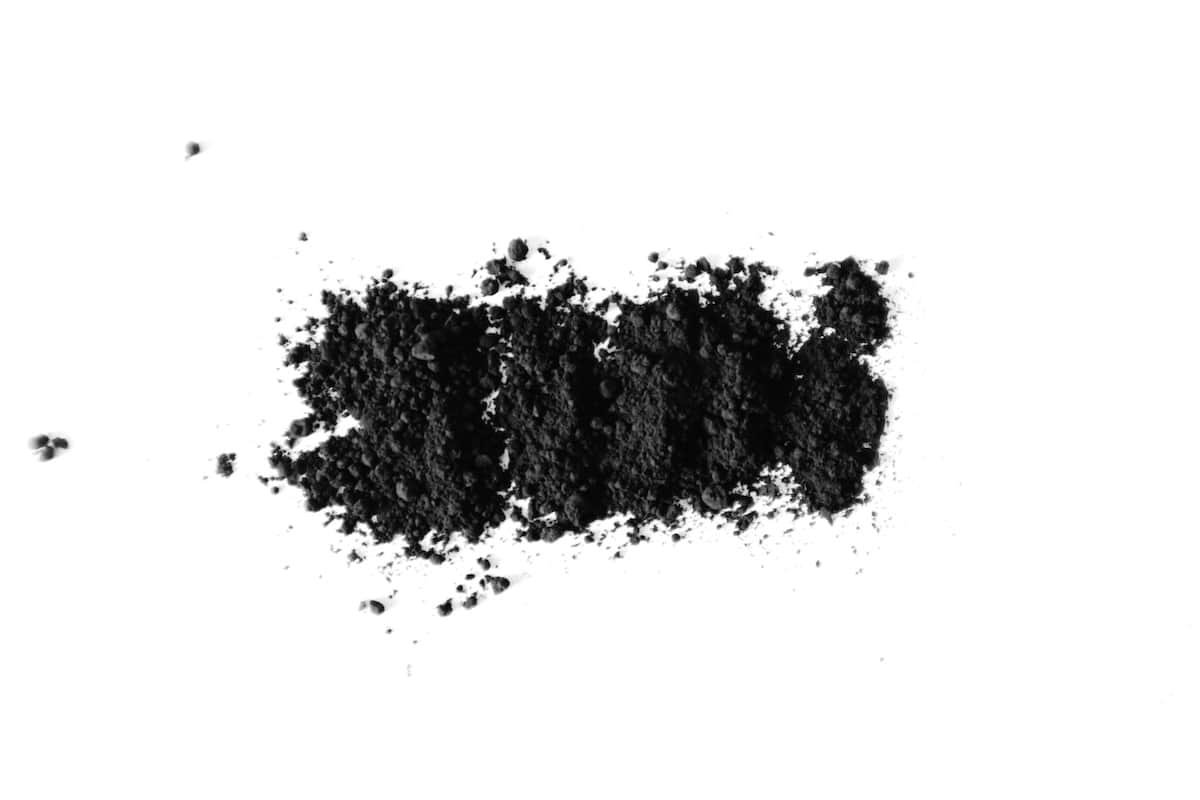Last update: May 31, 2025
8 minute read
Mcg to IU: Your Guide to Vitamin Conversions
Mcg to IU conversion made simple. Discover our expert guide on vitamin dosage conversions for Vitamin A, D, and more, with essential tips and FAQs to optimize your supplement regimen.

By Derick Rodriguez, Associate Editor
Edited by Dr. Jacquie Leone, NMD, HN

Understanding vitamin labels can be confusing, especially when different measurement units are involved. Let's explore how to convert between International Units (IU) and micrograms (mcg) so you can feel confident about your supplement choices.
Whether you’re wondering about a mcg to IU conversion for a specific nutrient or need help figuring out how to go IU to mcg for vitamin D, we’ve got you covered.
We’ll also walk through practical examples—like converting 25 mcg to IU and exploring conversions like mcg to IU vitamin D—to answer common questions like what is mcg in vitamins and what is mcg.
Key takeaways
- International Units (IU) are being switched out in favor of metric units (mg and mcg) for clarity and consistency
- Understanding the conversion is important for maintaining accurate dosing of vitamins A, D, and E
- The change doesn’t affect the actual content of vitamins in supplements, only how their amounts are represented on labels
IU vs mcg
International Units (IU) and micrograms (mcg) are not interchangeable measurements. Both serve different purposes in the context of health supplements.
IU tells you how much vitamins A, D, and E affect your body, showing their biological effect. In contrast, mcg measures the actual mass of a substance.
Here's a breakdown of the key differences:
- IU provides a measure based on the biological activity of a substance, like a vitamin's effect on the body.
- Mcg represents the mass of a substance, offering a direct measure of its weight.
- Transitioning from IU to mcg offers more precision in dosage, sticking to standardized metric units favored by the FDA.
Given the FDA's recent shift to metric units on supplement labels, understanding this conversion is important. For example, 1,000 IU of vitamin D converts to 25 mcg, showing the big difference in numerical value when switching from IU to mcg.
VitaRx Tip
The FDA updated supplement labels to make it easier for people to know how much of each vitamin they should take daily.
Understanding conversion rates
Switching from IU to metric units is important, especially for certain vitamins. Let's consider vitamin D, which is crucial for keeping our bones strong and our immune system working well.
Converting IU to mcg for vitamin D is important because many people take these supplements regularly. It helps make sure they know exactly how much they're getting.
- 1,000 IU of vitamin D is equivalent to 25 mcg.
- Consistent measurement across product labels simplifies understanding the amount consumed, aligning with global standards.
Vitamin A and vitamin E conversions
- Vitamin A's transition to mcg helps us understand where it comes from and how much we need each day. Different sources have different conversion rates, so using standardized units is crucial for taking the right amount.
- We measure both natural and man-made vitamin E in milligrams of alpha-tocopherol to help people understand how much antioxidants they're getting and make better choices about their intake.
Why this matters
As we learn more about IU vs mcg for vitamins, it's important to understand how vitamins are measured and why it matters for your health. Knowing these differences helps you control the supplements you take, which is important for staying healthy.
Common IU to mcg conversion amounts for vitamins
Below is a handy guide to converting International Units (IU) to micrograms (mcg) for vitamins that are commonly expressed in these measurements. These approximate conversion factors help you understand your supplement labels and ensure proper dosing.
Vitamin A (Retinol)
- 1 IU vitamin A (retinol) = 0.3 mcg retinol
Example conversions:
- 2,500 IU vitamin A: ≈ 750 mcg retinol
- 5,000 IU vitamin A: ≈ 1,500 mcg retinol
Note: This conversion applies to retinol, the active form of vitamin A. Other forms, like beta-carotene, convert differently.
Vitamin D
- 1 IU vitamin D = 0.025 mcg (applies to both Vitamin D₂, ergocalciferol, and Vitamin D₃, cholecalciferol)
Example conversions:
- 400 IU vitamin D: ≈ 10 mcg
- 800 IU vitamin D: ≈ 20 mcg
- 1,000 IU vitamin D: ≈ 25 mcg
- 2,000 IU vitamin D: ≈ 50 mcg
How many IU is 25 mcg?
For vitamin D, since 1,000 IU equals 25 mcg, converting 25 mcg to IU gives you 1,000 IU.
How many mcg is 1,000 IU?
Based on the conversion factor for vitamin D, 1,000 IU is equivalent to approximately 25 mcg.
How many mg is 1,000 IU?
Since 1,000 IU of vitamin D equals 25 mcg, and knowing that 1 mg = 1,000 mcg, 1,000 IU is equal to 0.025 mg.
These conversions provide a quick reference for popular supplement doses. Always verify the conversion factors on your specific supplement labels or consult with a healthcare provider when precise dosing is important.
The significance of the IU to mcg conversion in your daily life
- Converting IU to mcg is important for figuring out the right amount of vitamins and supplements to take.
- Knowing how to convert IU to mcg helps in reading food and supplement labels for better dietary decisions.
Health made easy: your go-to resource for essential vitamins and supplements

Understanding common vitamin label abbreviations
Decoding supplement labels can be challenging, but knowing the common abbreviations makes it easier to understand the nutritional content. Here’s a quick guide to some key units you might see:
- IU = International Unit
A measurement based on biological activity rather than mass. - RAE = Retinol Activity Equivalents
A standard for vitamin A that accounts for different sources and forms. - DFE = Dietary Folate Equivalent
A measure that helps compare the folate available from foods and supplements. - NE = Niacin Equivalent
A unit that standardizes niacin content from various sources, including tryptophan conversion. - mg = Milligram
A metric unit of mass, where 1 mg is one-thousandth of a gram. - mcg or μg = Microgram
A metric unit of mass, where 1 mcg is one-millionth of a gram.
Understanding these abbreviations can help you navigate labels more confidently and make informed choices about your vitamin intake.

Why the change matters
- Improved accuracy: The switch to mcg and mg enables precise measurement and comparison of substance amounts.
- International standardization: Sticking to metric units aligns with global practices, simplifying international health guidelines.
- Consumer clarity: By specifying the exact mass of vitamins and supplements, consumers can stick to recommended dosages more easily.
The new labels might seem confusing at first, but they actually make it easier for people to understand the supplements.
Further implications of metric conversion
Understanding metric conversions means more than just getting used to different labels. It's about realizing how these changes affect nutritional science and health supplements.
- Making rules the same everywhere helps compare and study health in different places more easily.
- Switching to metric units helps us be more precise in health sciences. It makes it easier to improve research on nutrition and how to add nutrients to our diets.
Dos and don'ts of converting IU to mcg
When you switch from International Units (IU) to milligrams (mg) and micrograms (mcg) for vitamins A, D, and E, you need to follow some rules. The FDA suggests this change so that people can properly measure and take the right amount of dietary supplements.
Do’s
Do consult a healthcare provider to ensure the correct conversion for your specific health needs.
Do double-check the conversion rates especially when dealing with vitamins that have different forms, like natural or synthetic Vitamin E.
Do use updated labels as a guide for accurately dosing vitamins and supplements.
Do educate yourself on the details between different vitamins and how they are measured.
Don’ts
Don't just rely on generic online conversion calculators without considering the biological activity of the vitamin.
Don't continue using old IU measurements without understanding their equivalent in mcg or mg for current supplement labels.
Don't overlook the importance of understanding the conversion as it may affect the efficacy of your supplementation routine.
Don't underestimate the effect of precise dosing on your overall health and wellness goals.
Advantages and disadvantages of transitioning from IU to metric units
The change from measuring vitamins in International Units (IU) to metric units (mg and mcg) marks a big change in how people take and understand dietary supplements. This transition is designed to standardize supplement labeling and improve clarity for consumers, health professionals, and the industry at large.
Frequently asked questions (FAQ)
Here are some of the most frequently asked questions about transitioning from IU to metric units.
Final thoughts
Switching between units like IU and mcg ensures you get the right dosage for optimal health. By familiarizing yourself with common conversion amounts and key label abbreviations, you can confidently interpret supplement information.
Whether you’re comparing a vitamin D mcg to IU ratio or simply checking how vitamin D IU to mcg stacks up, this guide gives you the tools you need. With clear examples, like converting 1000 IU to mcg and 1000 IU to mg, you’re well-equipped to make smart nutritional decisions and embrace a healthier lifestyle.
Sources and references
Editor

Derick Rodriguez
Derick Rodriguez focuses on editing health and wellness-related content. With over half a decade of experience in the digital realm, Derick has developed a unique skill set that bridges the gap between complex health concepts and accessible, user-friendly communication. His approach is deeply rooted in leveraging personal experiences and insights to illuminate the nuances of health and wellness topics, making them more approachable and empowering readers with knowledge and confidence.
Fact checker

Dr. Jacquie Leone
Dr. Leone holds a BA in Psychology, a Doctorate in Naturopathic Medicine, and board certification in holistic nutrition. In addition to practicing medicine, Dr. Leone has developed and currently teaches science and nutrition courses for a nationally accredited institution. She specializes in chronic illness, gastrointestinal dysregulation, inflammatory conditions, and mental health. Her unique approach combines the wisdom of Eastern medicine with the technology and science of Western medicine, offering an integrative approach heavily focused on functional medicine.
At VitaRx, we're not just passionate about our work — we take immense pride in it. Our dedicated team of writers diligently follows strict editorial standards, ensuring that every piece of content we publish is accurate, current, and highly valuable. We don't just strive for quality; we aim for excellence.
Related posts
While you're at it, here are some other relevant articles you might be interested in.

Get your personalized vitamin recommendations in less than
5 minutes.
Get your personalized vitamin recommendations in less than
5 minutes.






